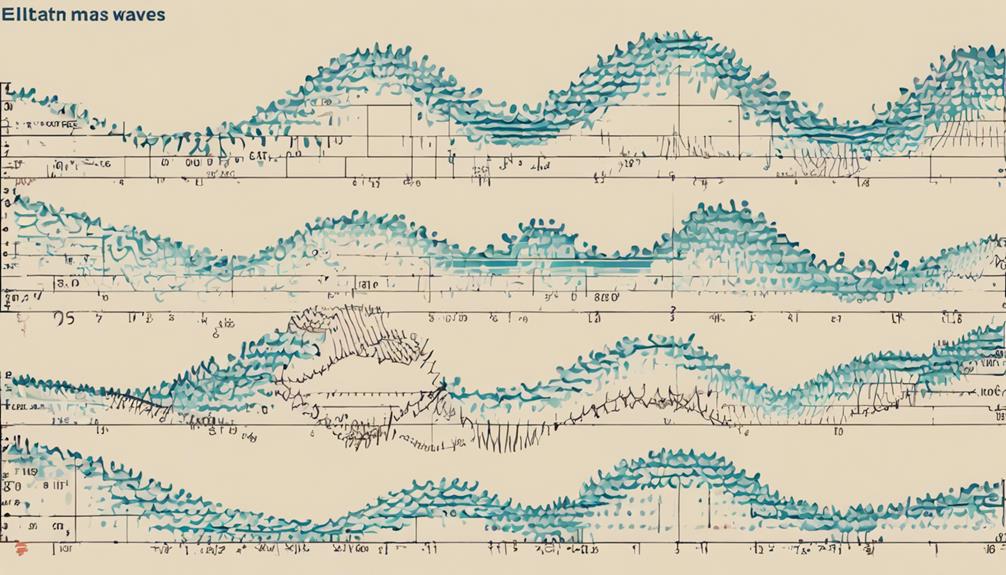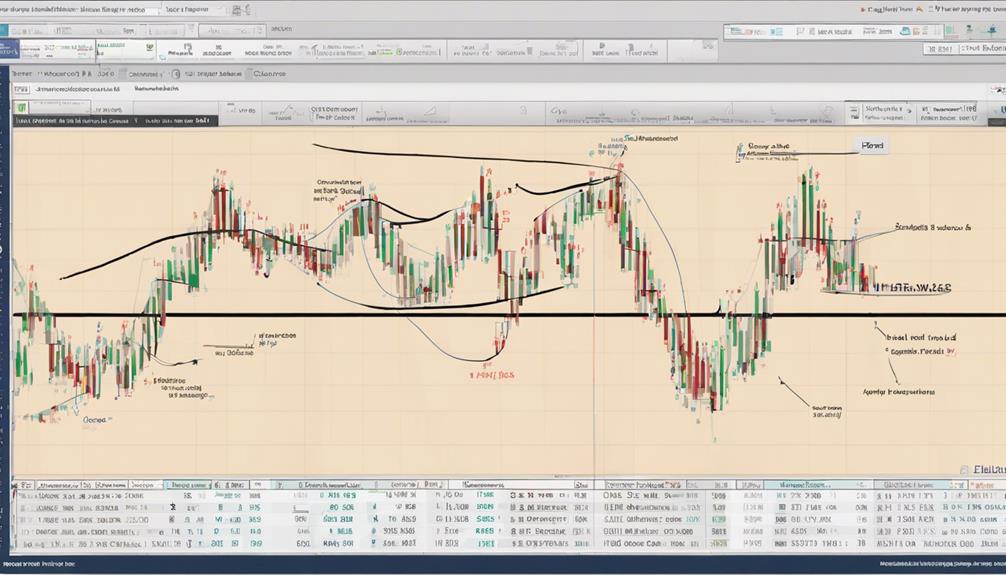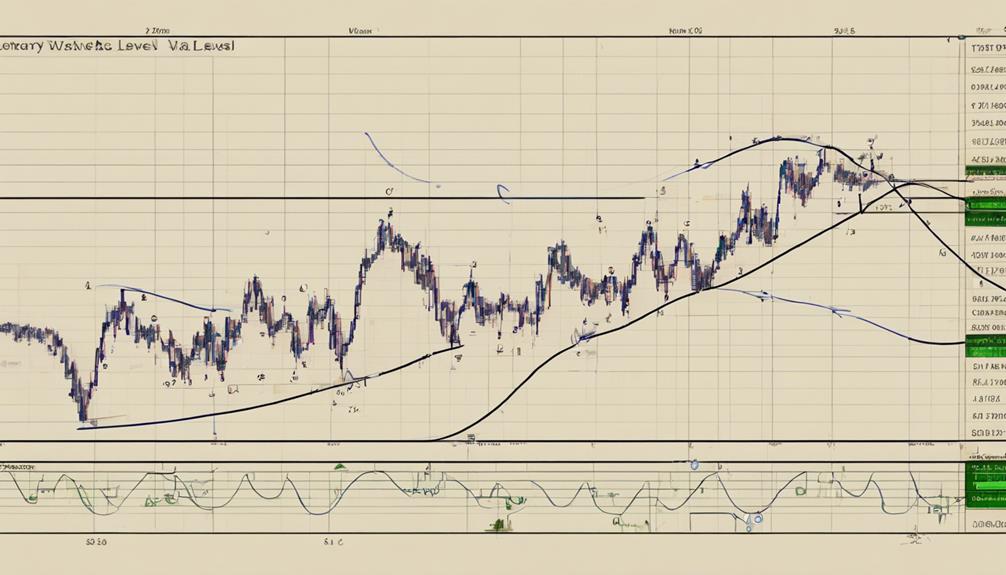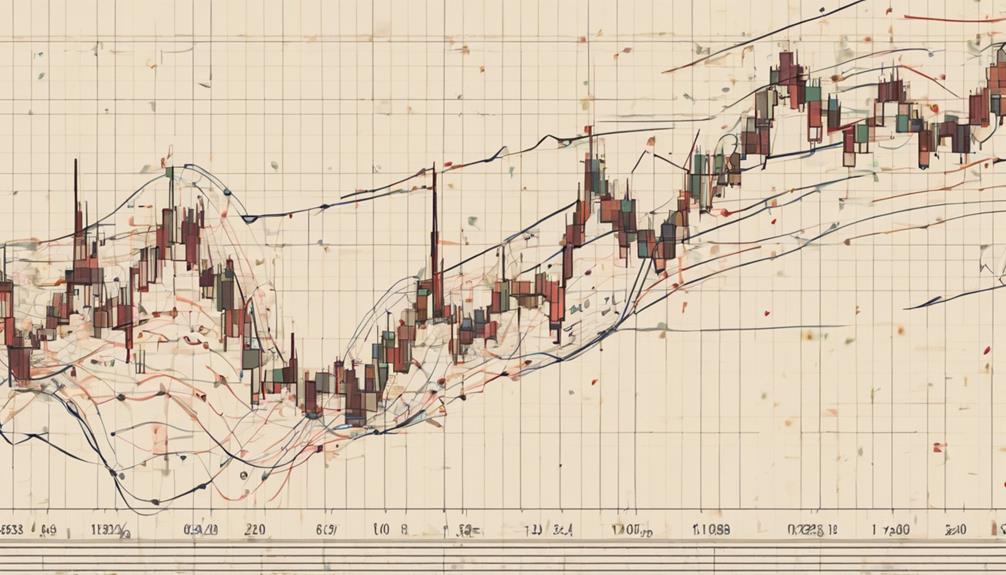Exploring the nuances of Elliott Wave Theory unveils a sophisticated framework for interpreting market dynamics with a focus on human behavior and market psychology.
The comprehensive tutorial dissects the intricate patterns and principles underpinning this analytical approach, shedding light on the subtleties that can make or break successful trading strategies.
As traders navigate the complexities of wave identification and application, they are presented with a roadmap to harness the power of Elliott Waves effectively.
In a landscape where precision is paramount, this tutorial offers a compelling avenue for traders to refine their skills and elevate their understanding of market movements.
Elliott Wave Theory Basics
Elliott Wave Theory serves as a fundamental framework for analyzing market price movements through the identification and interpretation of repetitive wave patterns. In this theory, markets move in cycles comprised of impulsive waves that follow the overall trend direction and corrective waves that move against the trend. By understanding these wave patterns, traders can anticipate potential trend changes and identify entry and exit points in the market.
Impulse waves are characterized by strong price movements in the direction of the prevailing trend, subdivided into five smaller waves labeled as 1, 2, 3, 4, and 5. Corrective waves, on the other hand, represent temporary price corrections against the trend and consist of three smaller waves denoted as A, B, and C. Recognizing these wave patterns is crucial for traders employing Elliott Wave Theory to make informed decisions regarding market positions.
Through the analysis of wave patterns, traders can gain insights into the market's psychology and potential future price movements. This understanding enhances the ability to forecast market trends and strategically plan entry and exit points within the market.
Identifying Elliott Waves

In the context of market analysis, the precise identification of wave patterns is essential for effectively applying Elliott Wave Theory and making informed trading decisions. Elliott Waves are recognized by a 5-3 wave pattern structure in market movements, where impulse waves align with the main trend, and corrective waves move counter to it.
To identify Elliott Waves accurately, analysts often start wave counts from significant support and resistance zones to pinpoint turning points. Connecting swing highs and lows aids in the precise identification of the waves within an Elliott wave cycle. Proper wave analysis is fundamental as it determines the success of applying the Elliott wave principle to forecast future price movements.
Recognizing and counting waves correctly is pivotal for traders and investors seeking to navigate the markets using Elliott Wave Theory to understand and predict market trends effectively.
Applying Elliott Waves in Trading

Utilizing Elliott Wave Theory in trading involves analyzing wave patterns in price movements to anticipate market trends and determine strategic entry and exit points for trades.
By applying Elliott Waves, traders can conduct thorough market analysis through wave counts, which helps in identifying the most probable future price movements.
This methodology enables traders to establish effective entry and exit points based on the wave patterns, allowing for precise timing in executing trades.
Understanding Elliott Waves also aids in managing trading risks by providing a structured approach to decision-making, rooted in market psychology and historical price data.
Successful application of Elliott Wave Theory contributes to improved trading decisions and overall trading success, as traders become more adept at interpreting price action within the context of wave patterns.
Embracing these principles enhances the probability of profitable trades and fosters a disciplined trading approach essential for long-term trading success.
Advanced Elliott Wave Strategies

Implementing advanced strategies in Elliott Wave Theory involves integrating Fibonacci ratios and channeling concepts to enhance market analysis precision. Traders utilizing these advanced techniques focus on identifying complex wave patterns like triple zigzags and leading diagonals to forecast market movements more accurately.
To succeed in advanced Elliott Wave strategies, traders need to understand wave extensions, alternations, and the psychology behind wave formations. By mastering these intricacies, traders can capture market reversals and significant price movements with high probability setups.
It is essential to apply these strategies with discipline and patience, as they require a deep comprehension of wave structures and their implications in real-time trading scenarios. Through the utilization of Fibonacci ratios and channeling concepts, traders can navigate the markets with a more sophisticated approach, increasing the likelihood of successful trades based on precise market analysis.
Critique and Limitations of Elliott Waves

Critics of Elliott Wave Theory often raise concerns regarding its subjective nature and the potential for inconsistencies in wave counts. The complex wave structures and the precise identification of waves pose challenges for traders in accurately predicting price movements.
The limitations of Elliott Waves are evident in the difficulty traders face in determining the exact duration and magnitude of price shifts, leading to potential trading inaccuracies. Critics question the reliability of wave interpretations in forecasting market movements, highlighting instances where predictions have failed.
Mastering Elliott Wave Theory requires extensive knowledge and experience, making it a daunting task for many professional traders. The subjective nature of wave identification and the complexities involved in wave counts contribute to the skepticism surrounding the effectiveness of Elliott Wave Theory in market forecasting.
Despite its popularity, the theory's interpretive nature and the intricacies of wave structures remain contentious points among traders.
How Can I Perfect the Application of Elliott Wave Theory?
Understanding and applying Elliott Wave Theory is essential for traders in predicting market trends. To perfect the application, one must study wave patterns, use Fibonacci retracement levels, and practice patience. Additionally, identifying key support and resistance levels is essential when applying Elliott Wave Theory in trading strategies.
Frequently Asked Questions
How Do You Study Elliott Wave Theory?
Studying Elliott Wave Theory involves learning wave patterns, rules, and structures. It requires practice in identifying and counting waves on price charts, utilizing indicators for confirmation, and engaging in real-time market analysis to apply and refine your understanding.
How Do You Master Elliott Wave?
To master Elliott Wave Theory, one must diligently study wave structures, differentiate between impulse and corrective waves, and identify support and resistance zones accurately. Utilize indicators for entry points, focus on pattern confirmation, and aim for trading precision.
What Is the Best Indicator for Elliott Wave?
The best indicator for Elliott Wave Theory is the Elliott Wave Oscillator. It aids in confirming wave counts and identifying potential trade setups. Additionally, the MACD and RSI are popular indicators for confirming wave patterns and identifying overbought or oversold conditions within wave structures.
How Do You Trade Elliott Wave for Beginners?
For beginners, trading Elliott Wave involves mastering wave patterns, understanding impulse and corrective waves, following rules for wave counting, and using indicators to identify entry points. Focus on formations, price action, and a trading plan.
Conclusion
In conclusion, mastering Elliott Wave Theory is akin to navigating a complex maze with precision and skill.
By diligently applying wave counting techniques and understanding wave structures, traders can enhance their ability to make informed decisions in financial markets.
While Elliott Wave Theory offers valuable insights, it is important to acknowledge its limitations and continuously refine strategies for optimal trading outcomes.
